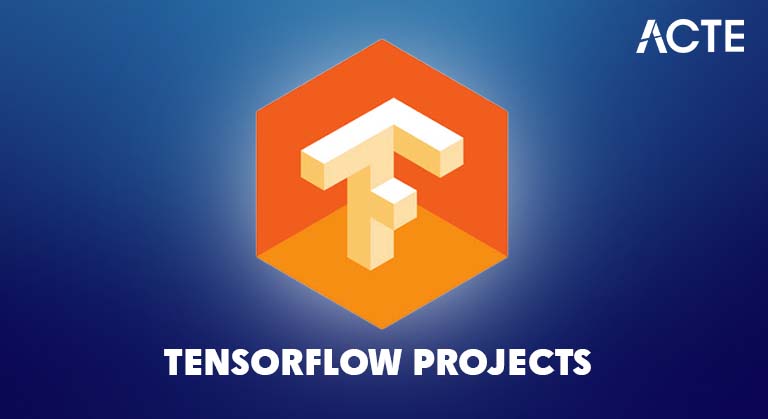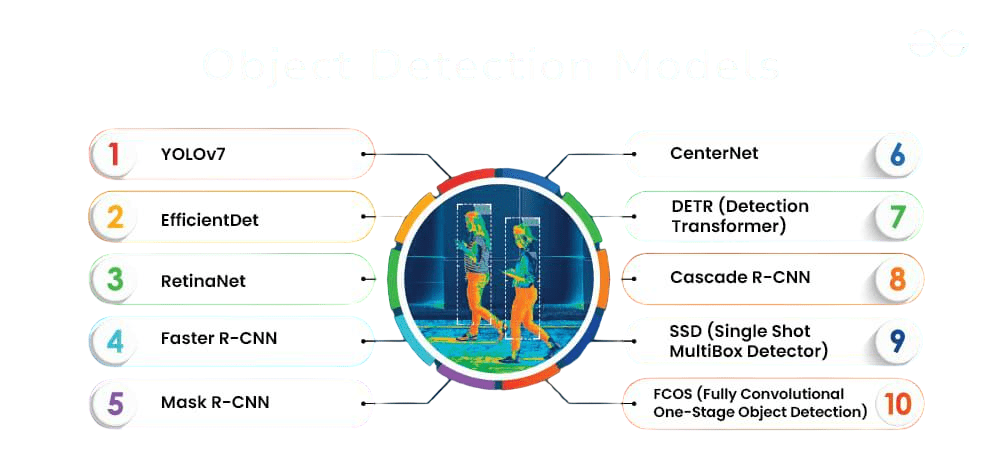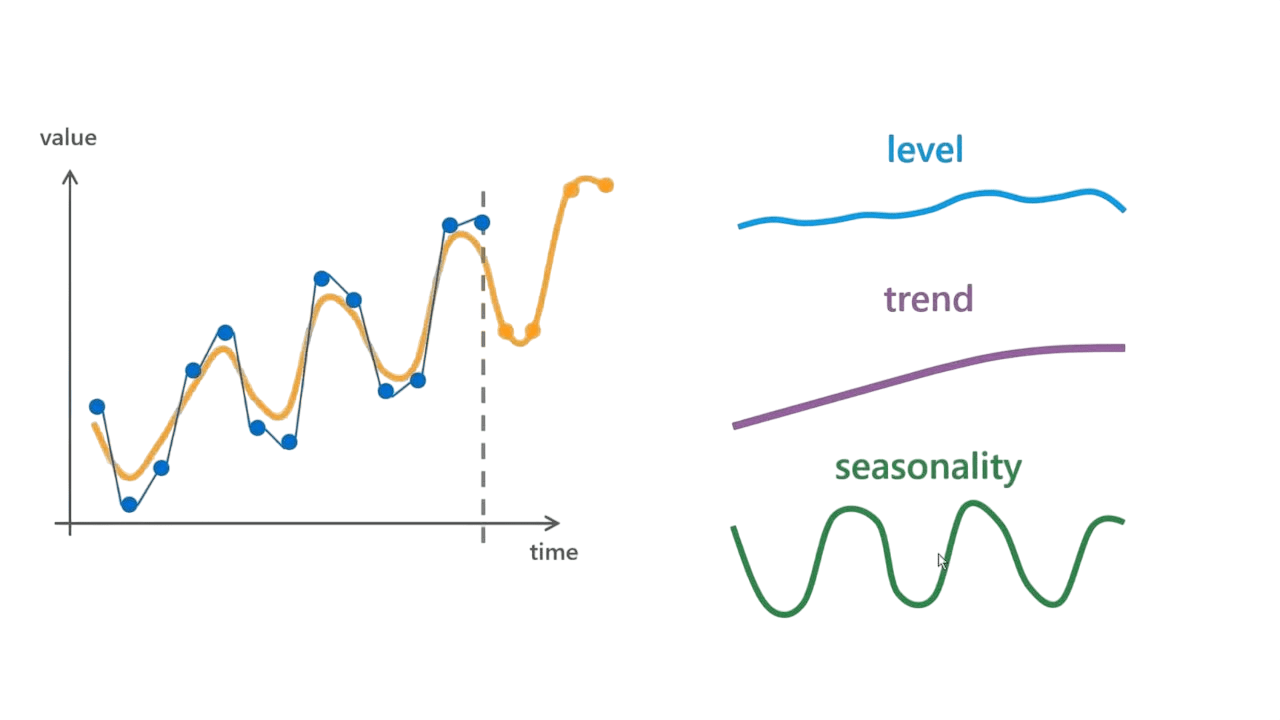
- Overview of TensorFlow
- Image Classification Project
- Object Detection
- Handwritten Digit Recognition
- Sentiment Analysis with TensorFlow
- Text Classification
- Time Series Forecasting
- TensorFlow with Keras
- Summary
Overview of TensorFlow
TensorFlow is an open-source Machine Learning Training framework developed by Google Brain. It’s designed for numerical computation and large-scale machine learning, offering tools to build and train deep learning models efficiently. TensorFlow supports multiple platforms (CPU, GPU, TPU), multiple languages (Python, JavaScript, C++), and deployment options (cloud, edge, web).TensorFlow is an open-source machine learning framework developed by the Google Brain team. It provides a comprehensive ecosystem for building, training, and deploying machine learning and deep learning models across various platforms. TensorFlow Projects is widely used in academia and industry due to its flexibility, scalability, and robust support for both research and production. One of its key features is the use of computational graphs, where operations are represented as nodes and data flows through them in the form of tensors, enabling efficient computation on CPUs, GPUs, and TPUs. TensorFlow supports a wide range of tasks, including image and speech recognition, natural language processing, and predictive analytics. Its high-level APIs, such as Keras, make it easier for developers and researchers to build and experiment with neural networks without needing to manage low-level details. Additionally, Sentiment Analysis with TensorFlow Extended (TFX) supports end-to-end machine learning workflows, while TensorFlow Lite and TensorFlow.js enable deployment on mobile devices and web browsers, respectively. The platform also integrates with other tools like TensorBoard for visualization and model debugging. With a large community and continuous updates, TensorFlow remains a leading framework for developing cutting-edge AI applications, offering both power and flexibility for beginners and experts alike. It supports high-level APIs like Keras for fast prototyping and low-level APIs for fine-tuning. Whether you’re building a CNN for image recognition or an RNN for time series forecasting, TensorFlow Projects provides scalable and robust infrastructure.
Ready to Get Certified in Machine Learning? Explore the Program Now Machine Learning Online Training Offered By ACTE Right Now!
Image Classification Project
Image classification is one of the most common deep learning tasks. In TensorFlow, it can be implemented using Convolutional Neural Networks (CNNs).
- Project Title: Image Classification Using Deep Learning
- Objective: Classify images into predefined categories using a trained model
- Dataset: Use datasets like CIFAR-10, MNIST, or custom-labeled image datasets.Ensure dataset is balanced and preprocessed (resized, normalized)
Tools & Libraries:
- Python
- TensorFlow / Keras or PyTorch
- NumPy, Matplotlib for visualization
Data Preprocessing:
- Image resizing and normalization
- Data augmentation to improve generalization (e.g., rotation, flipping) is used in Machine Learning Models
- Splitting into training, validation, and test sets
Model Architecture:
- Convolutional Neural Network (CNN)
- Layers: Conv2D, MaxPooling, Flatten, Dense, Dropout
- Activation functions (ReLU, Softmax)
Training:
- Loss function: Categorical Crossentropy
- Optimizer: Adam or SGD
- Monitor accuracy and loss with validation data
Evaluation:
- Test accuracy and confusion matrix
- Visualize sample predictions
- Deployment (optional): Convert to TensorFlow Lite or deploy with Flask web app
- Challenges: Overfitting, model bias, data quality
- Outcome: A trained model that can accurately classify unseen images into categories
Object Detection
Object Detection is a computer vision task that involves identifying and locating multiple objects within an image or video. Unlike image classification, which assigns a single label to an entire image, object detection not only classifies objects but also determines their positions using bounding boxes. Machine Learning Training makes it essential for real-world applications such as autonomous driving, surveillance systems, facial recognition, and medical imaging.and medical imaging. Object detection combines techniques from image classification and localization to detect multiple instances of various objects in a single frame.

Modern object detection systems are often built using deep learning, particularly Convolutional Neural Networks (CNNs). Popular architectures include YOLO (You Only Look Once), SSD (Single Shot MultiBox Detector), and Faster R-CNN, each offering different trade-offs between speed and accuracy. These models take an input image and output both the class labels and the coordinates of the bounding boxes for each detected object. The performance of object detection models is typically evaluated using metrics like Intersection over Union (IoU) and Mean Average Precision (mAP). Training such models requires large annotated datasets like COCO or Pascal VOC. As the field advances, object detection continues to play a vital role in enabling machines to interpret and interact with the visual world in increasingly sophisticated ways.
To Explore Machine Learning in Depth, Check Out Our Comprehensive Machine Learning Online Training To Gain Insights From Our Experts!
Handwritten Digit Recognition
Using the MNIST dataset, TensorFlow makes it easy to build a digit recognizer with high accuracy.
- Dataset: keras.datasets.mnist provides 28×28 grayscale images of digits 0–9.
- Model: A simple dense neural network or CNN can be used.
- model = tf.keras.Sequential([
- tf.keras.layers.Flatten(input_shape=(28, 28)),
- tf.keras.layers.Dense(128, activation=’relu’),
- tf.keras.layers.Dense(10, activation=’softmax’)
- ])
- Classify news articles into topics using the 20 Newsgroups dataset.
- Tokenize and vectorize using TextVectorization.
- Use an embedding layer and a dense neural network.
- For multi-class tasks, use categorical_crossentropy and softmax.
- User-friendly
- Modular and composable
- Extensive support and documentation
- model = tf.keras.Sequential([…])
- inputs = tf.keras.Input(shape=(784,))
- x = tf.keras.layers.Dense(64, activation=’relu’)(inputs)
- outputs = tf.keras.layers.Dense(10)(x)
- model = tf.keras.Model(inputs, outputs)
Train the model with model.fit() and evaluate with model.evaluate(). This classic problem demonstrates how a neural network can learn to recognize patterns in visual data using Machine Learning Cross Validation .
Sentiment Analysis with TensorFlow
Sentiment Analysis with TensorFlow involves using machine learning techniques to determine the emotional tone behind a body of text typically classifying it as positive, negative, or neutral. It is widely used in applications such as customer feedback analysis, social media monitoring, and product review evaluation. TensorFlow, with its powerful deep learning capabilities and high-level APIs like Keras, provides an efficient and scalable framework to build and train sentiment analysis models. The process typically begins with data preprocessing, which includes cleaning the text, removing stop words, tokenizing, and A Robotics Engineer may convert words into numerical representations using techniques like word embeddings (e.g., Word2Vec, GloVe) or TensorFlow’s built-in TextVectorization layer. A common model architecture for sentiment analysis is a neural network that may include embedding layers, LSTM (Long Short-Term Memory) or GRU (Gated Recurrent Unit) layers for sequence processing, followed by dense layers for classification. After training on labeled datasets such as IMDb reviews or Twitter sentiment data, the model learns to recognize patterns and context within text to predict sentiment accurately. TensorFlow Projects also offers tools like TensorBoard for visualizing training progress and model performance. With its flexibility and support for deployment on various platforms, TensorFlow is a popular choice for developing robust and real-time sentiment analysis systems.
Looking to Master Machine Learning? Discover the Machine Learning Expert Masters Program Training Course Available at ACTE Now!
Text Classification
Text classification assigns categories to text, such as spam detection or topic labeling.
Example:
Pretrained word embeddings like GloVe or Word2Vec can improve performance.
Time Series Forecasting
Time Series Forecasting is a technique used to predict future values based on previously observed data points collected over time. Deep Learning Explained It plays a critical role in various fields such as finance, weather prediction, inventory management, and energy consumption forecasting. The main challenge in time series forecasting is to capture temporal patterns, trends, and seasonal variations present in the data.

The process begins with data collection, followed by preprocessing steps like handling missing values, smoothing, and normalization. Models used for time series forecasting range from traditional statistical methods such as ARIMA (AutoRegressive Integrated Moving Average) and Exponential Smoothing to advanced machine learning and deep learning techniques. Recurrent Neural Networks (RNNs), especially Long Short-Term Memory (LSTM) networks, are popular for their ability to learn dependencies across time steps. Effective forecasting involves model selection, training, validation, and fine-tuning. Performance is commonly measured using metrics like Mean Absolute Error (MAE), Root Mean Squared Error (RMSE), and Mean Absolute Percentage Error (MAPE). With the rise of big data and powerful computing resources, time series forecasting has become more accurate and scalable, enabling businesses and researchers to make informed decisions based on predicted future trends.
Preparing for Machine Learning Job Interviews? Have a Look at Our Blog on Machine Learning Interview Questions and Answers To Ace Your Interview!
TensorFlow with Keras
Deep Learning Explained: What Is MLOps Keras is the official high-level API for TensorFlow. It simplifies model building and training.
Benefits:
Keras allows building Sequential and Functional models.
Sequential API:
Functional API:
Keras integrates seamlessly with TensorFlow tools like tf.data, tf.keras.callbacks, and tf.summary.
Summary
TensorFlow Projects offers a versatile and powerful environment for building Machine Learning Training applications across domains. From image and text processing to time series forecasting and real-time inference, Sentiment Analysis with TensorFlow it scales from academic prototypes to production-ready systems.Time series forecasting predicts future values based on historical time-ordered data. It’s essential in areas like finance, weather, and inventory management. The process involves preprocessing data and using models to capture patterns such as trends and seasonality. Traditional methods like ARIMA and modern deep learning models like LSTMs are commonly used. Performance is evaluated with error metrics such as MAE and RMSE. Advances in computing have improved forecasting accuracy, helping organizations make better data-driven decisions.




